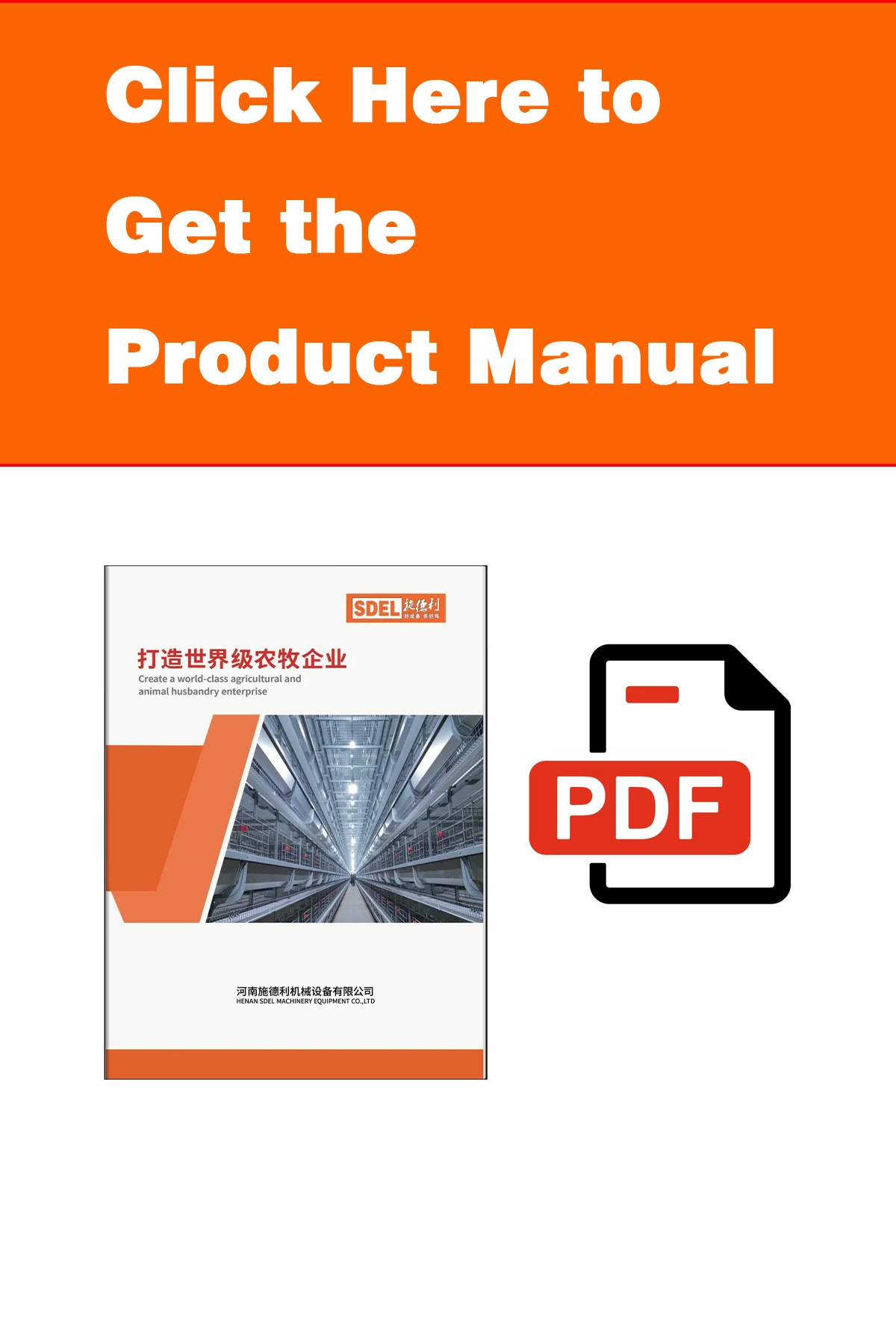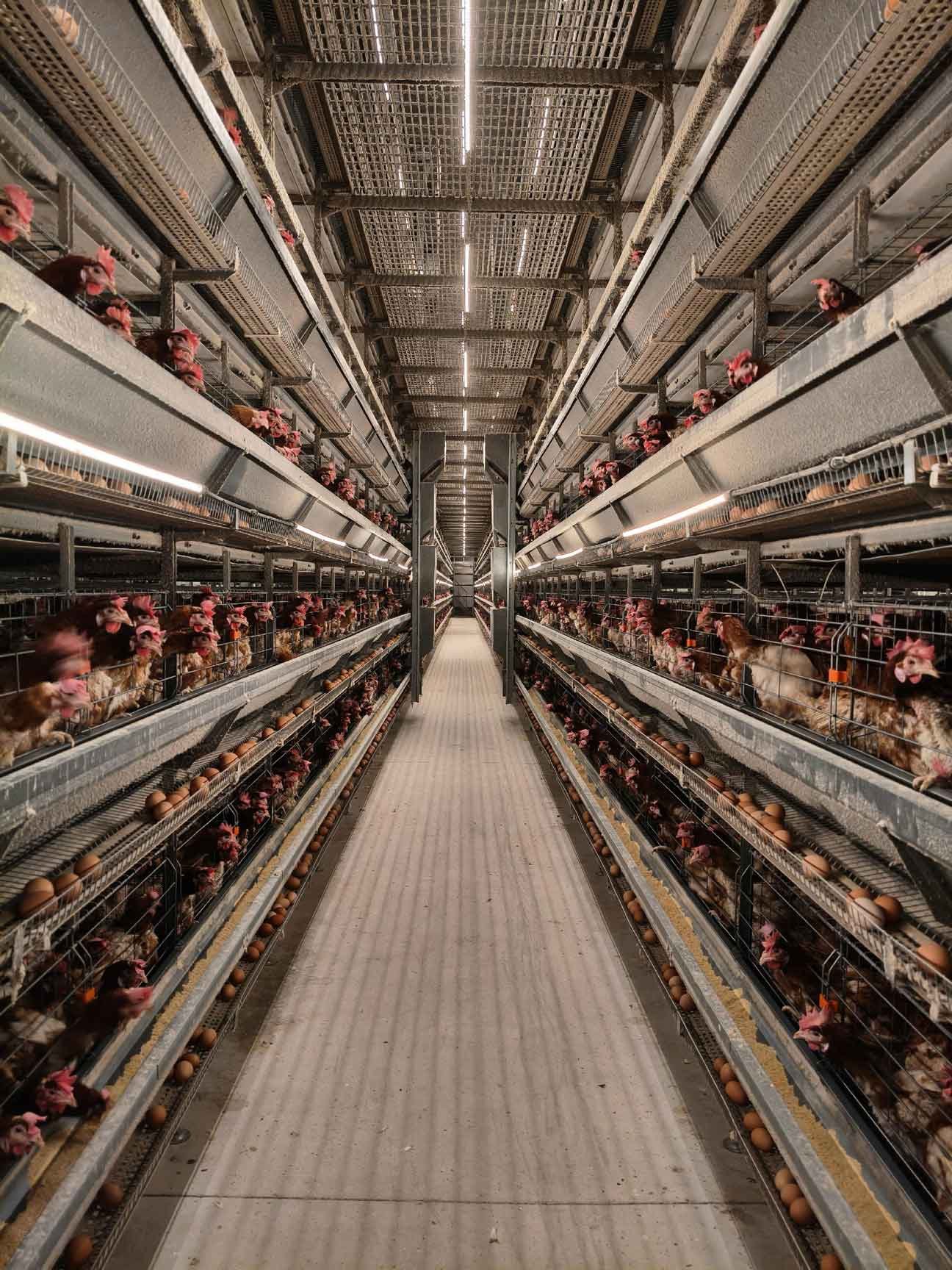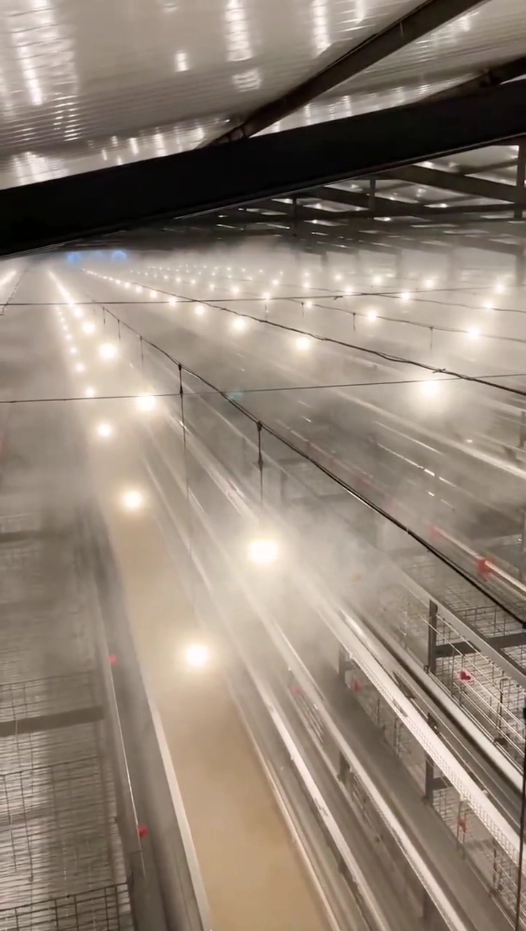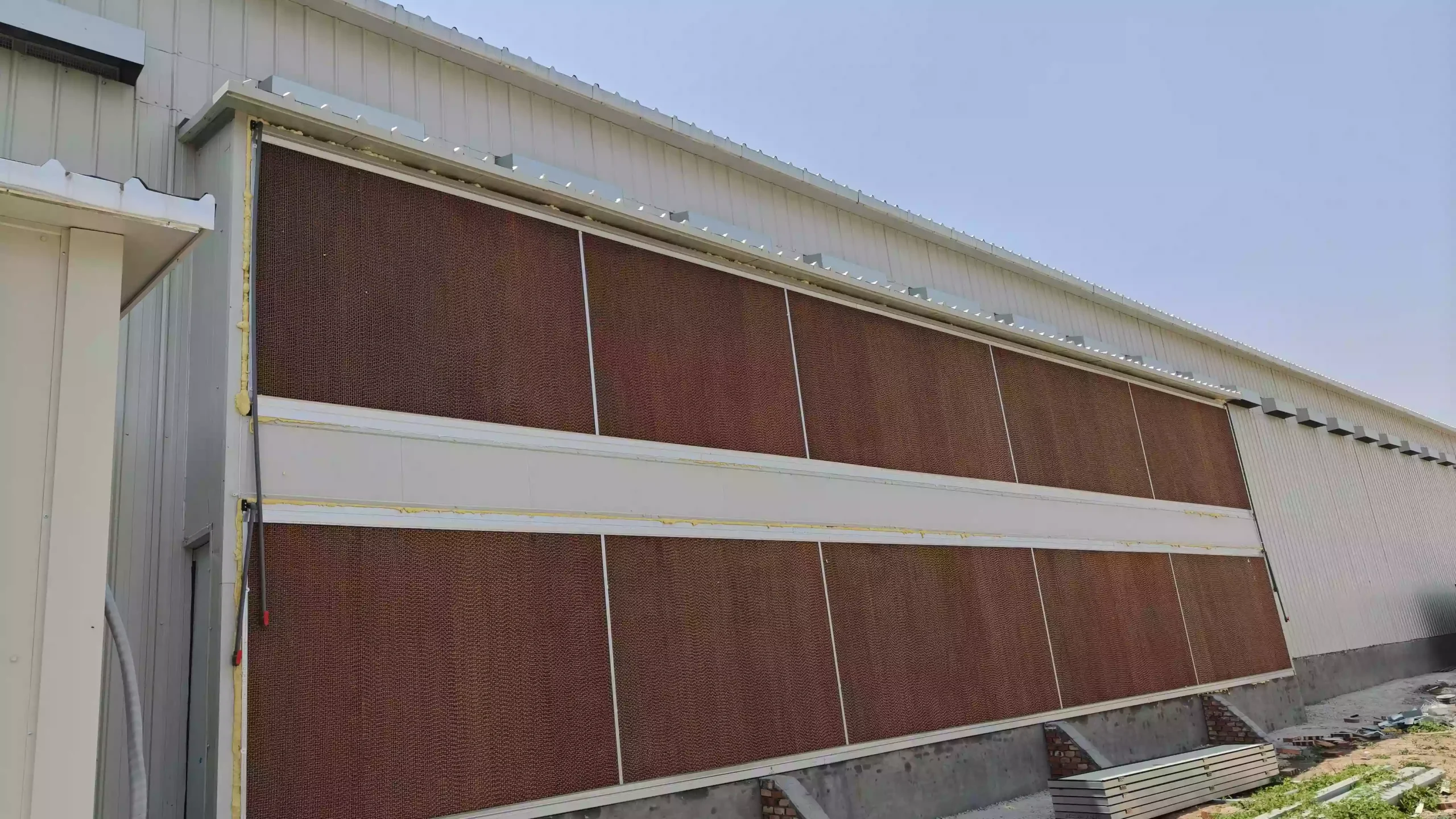Commercial Chicken Layer Cage System: Technical Guidelines for Stacked Layer Farming
With technological advancements, automation is gradually transforming livestock farming. It reduces labor intensity and significantly saves human resources. Below are the technical specifications for stacked layer cage systems in commercial egg production.
1. Advantages of Stacked Layer Cage Systems
Stacked layer cages are the preferred equipment globally for large-scale, intensive, automated, and standardized egg production. Key benefits include:
- Space efficiency: Compact footprint with high vertical space utilization
- Manure management: Tiered manure removal enables natural air-drying (≤30% moisture), reducing environmental pollution
- Automation: Full automation minimizes labor requirements and operational intensity
- Biosecurity: Enclosed design reduces disease transmission risks
2. Layer Management Protocols

2.1 Timing for Cage Placement
Transition hens to cages after completing vaccinations (Newcastle, IB, Avian Influenza, EDS) when initial egg production begins.
2.2 Feed Transition
Shift to peak-phase feed at 5% egg production. Implement a 7-day transition period. Maintain consistent feed quality without formulation changes.
2.3 Flock Monitoring
2.3.1 Health & Fecal Observation
- Odor check: Detect ammonia spikes (indicator of poor ventilation or E. coli)
- Fecal analysis:
- Green/white feces → Stress or Newcastle disease precursor
- Dry/scant feces → Water system failure
- Mortality: Immediate necropsy for disease diagnosis
2.3.2 Respiratory Audits
Post-lights-off checks for abnormal sounds (sneezing, coughing).
2.3.3 Feed & Water Intake
Adjust trough heights and verify consumption rates against stocking density.
2.3.4 Egg Production Metrics
Daily tracking of:
- Egg quantity/size
- Shell quality/color
- Breakage rates/soft-shell incidence
2.4 Culling
Promptly remove weak/ill birds, especially in upper tiers.
2.5 Antibody Testing
Regular serology for Newcastle and Avian Influenza.
2.6 Egg Handling
Pre-collect broken/soft-shelled eggs to prevent conveyor contamination.
2.7 Late-Phase Calcium Supplementation
Protocol:
- Add 0.01–0.015% vitamin AD₃ to feed
- Daily 3–4kg oyster shell grit per 4,000 hens at 5 PM
Scientific basis: 70% of shell calcification occurs afternoon-to-dusk.
3. Equipment Operation & Maintenance
3.1 Power Backup
Install automatic-transfer generators matching farm capacity.
3.2 Lighting
Ensure uniform distribution via staggered bulbs or LED strips.
3.3 Feeding Systems
Automated process:
- Feed delivery → External silos
- Horizontal conveyors → Hopper cars
- Programmed distribution along cages
Frequency: Farm-specific schedules (typically 2–4x/day)
3.4 Water Systems
- Nipples: 2 per cage (360° access)
- Drip trays: V-channel evaporative design
- Monitoring: Smart meters + inline filters/dosers
3.5 Manure Removal
Tiered PP conveyor belts enable:
- In-shed manure drying (↓moisture → ↓NH₃)
- Weekly clearance cycles
3.6 Egg Collection
Critical innovations:
- Soft-egg filter: Prevents conveyor jams
- Transition buffer: Minimizes impact damage between belts
3.7 Ventilation
Climate-specific designs:
- High-heat-humidity regions: Cooling-priority (evaporative pads)
- Temperate-climate regions: Air-exchange priority (tunnel fans)
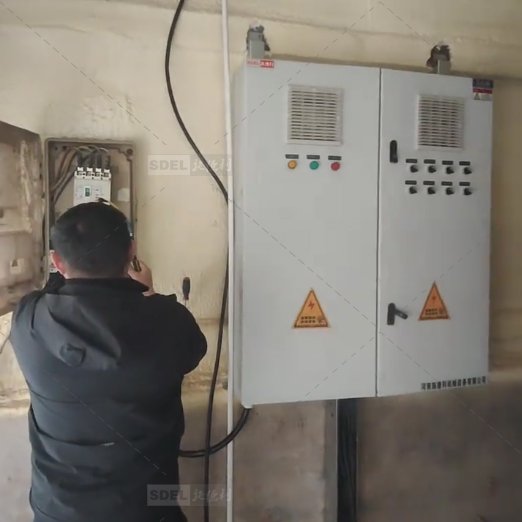
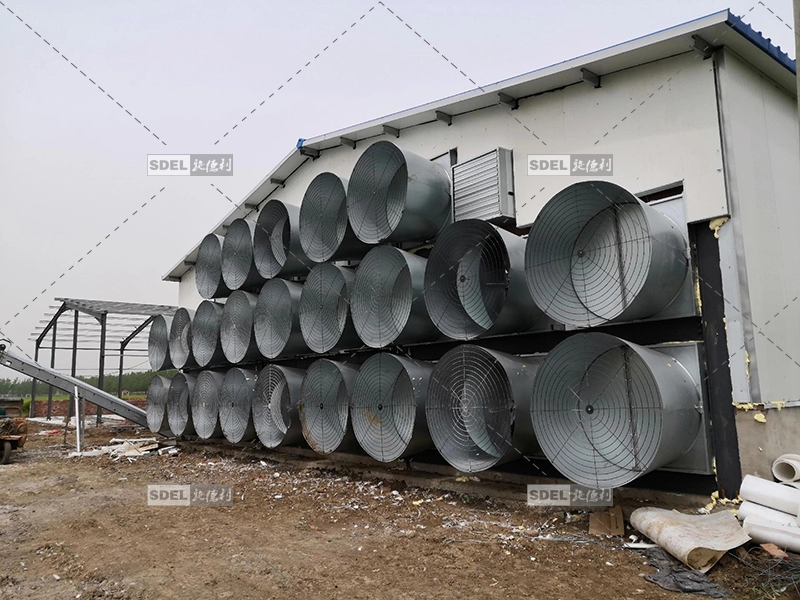
3.8 Maintenance Schedule
| Component | Frequency | Action |
|---|---|---|
| Drive chains/gears | Monthly | Lubricate (food-grade grease) |
| Egg/manure conveyors | Monthly | Clean rollers/debris |
| Ventilation inlets | Seasonally | Adjust shutter angles |
| Lighting | Quarterly | Wipe bulbs for lux consistency |
3.9 Troubleshooting
| Fault | Cause | Solution |
|---|---|---|
| Manure belt slippage | Overloading / Misalignment | Tighten tensioners; Clear debris |
| Feed cart failure | Rail obstruction / Switch failure | Clear tracks; Calibrate limit switches |
| Watery manure | Leaky nipples / Loose seals | Replace seals; Apply silicone sealant |
| High breakage rate | 1. Egg pecking 2. Thin shells 3. Conveyor impacts | 1. Install electric grids 2. Adjust calcium 3. Align transition buffers |
| Belt deviation | Non-parallel rollers | Realign roller brackets |
3.10 Safety Protocols
- Hazard zones: Prohibit access near operating conveyors
- Lockout/Tagout: Mandatory during maintenance
- Limit switches: Monthly functionality tests
Industry Validation
Stacked commercial chicken layer cage systems demonstrate:
- 18% higher space efficiency vs. flat-deck systems
- 40% labor reduction through automation
- ≤5 ppm ammonia concentration (EU welfare compliant)
Adoption rate: >80% of Chinese farms with 50,000+ hens.

